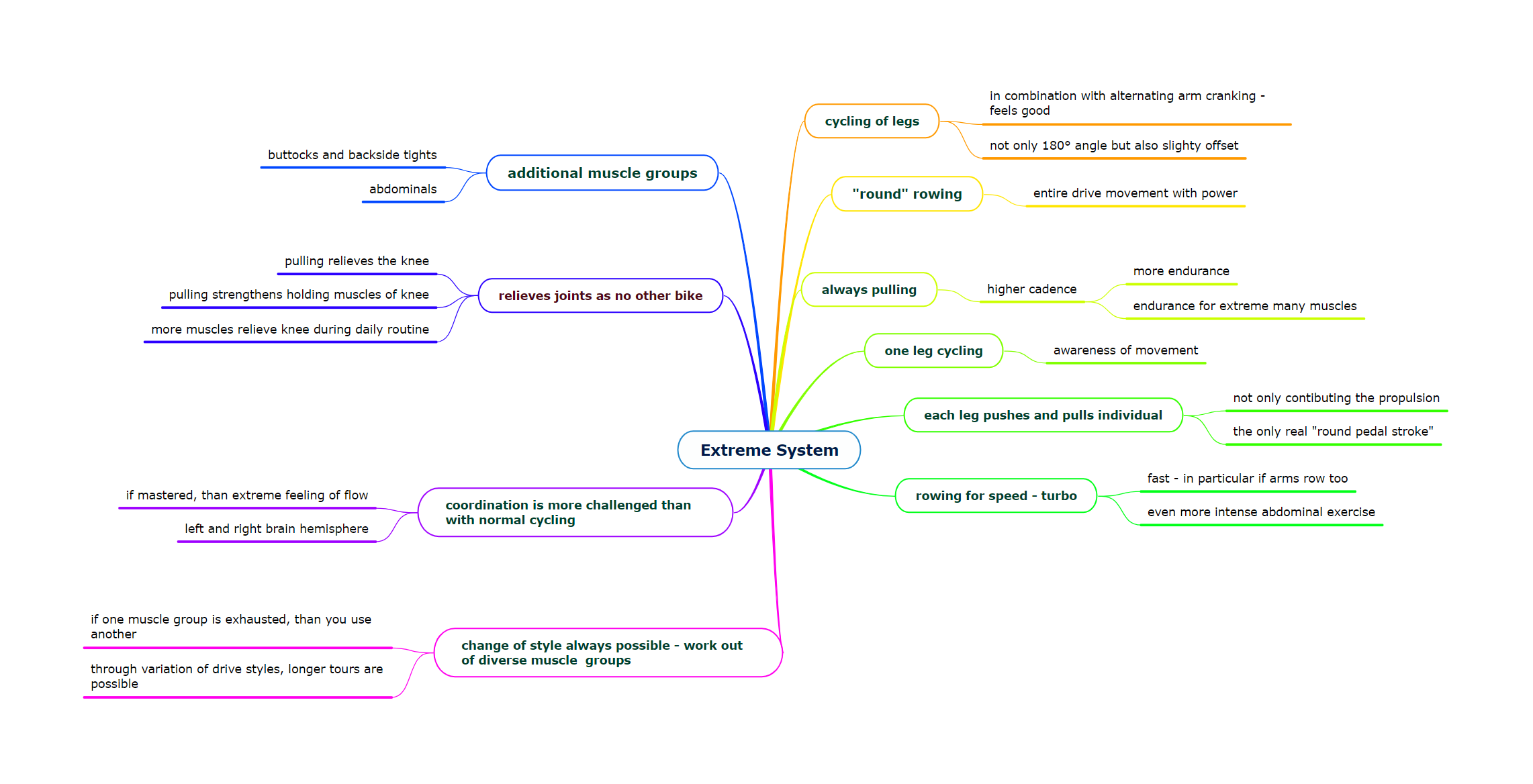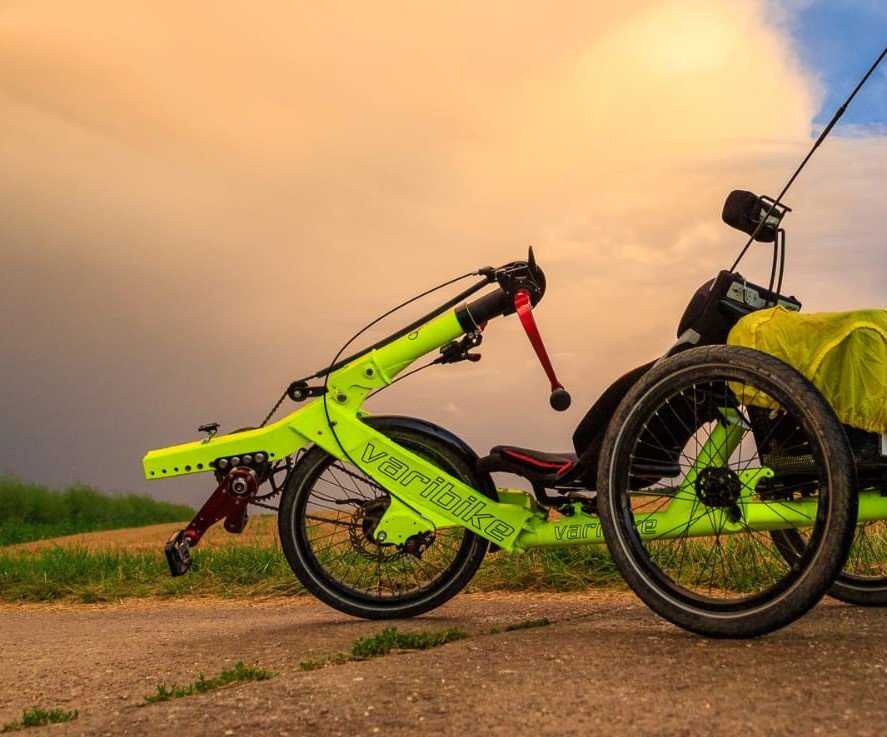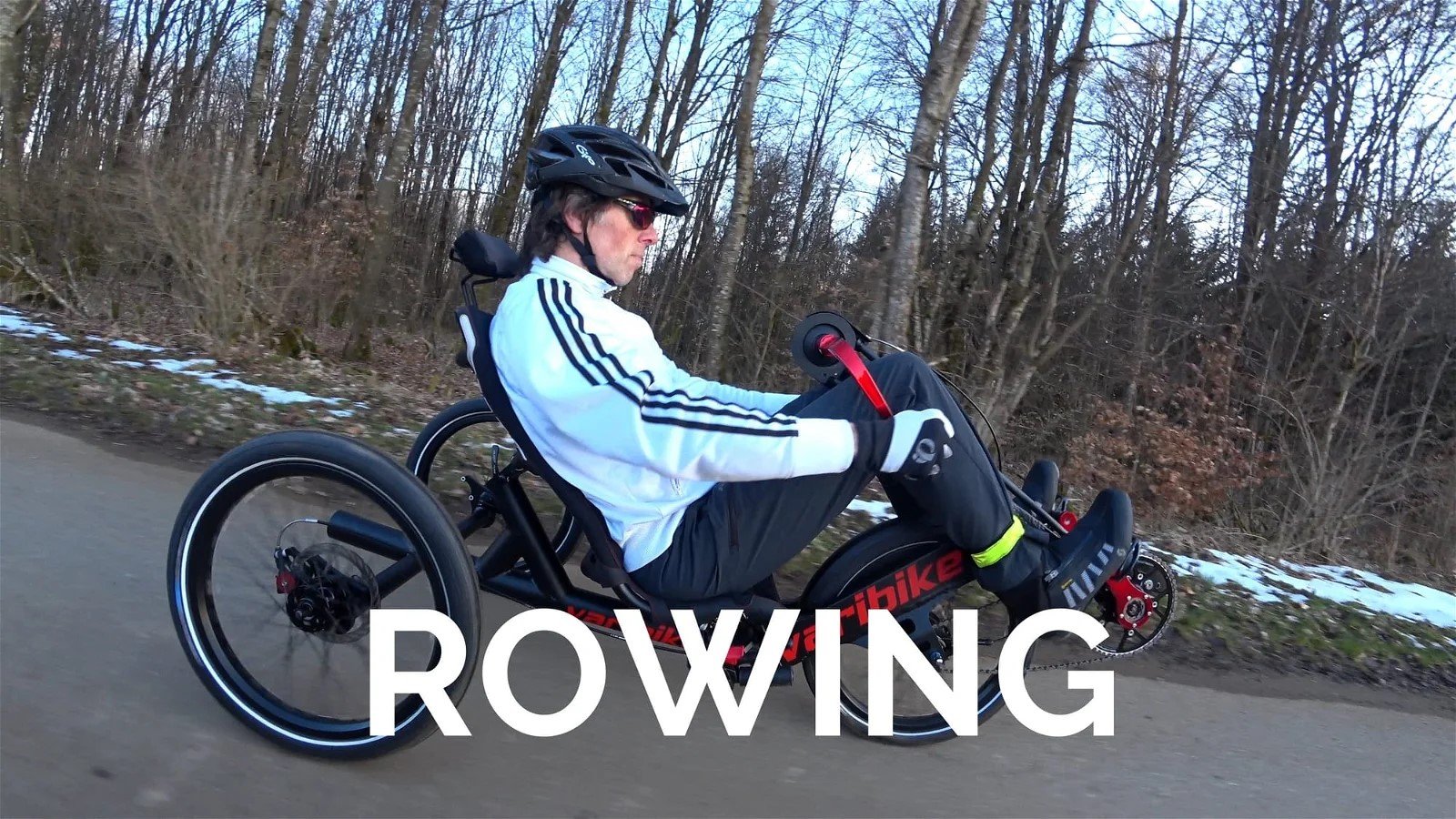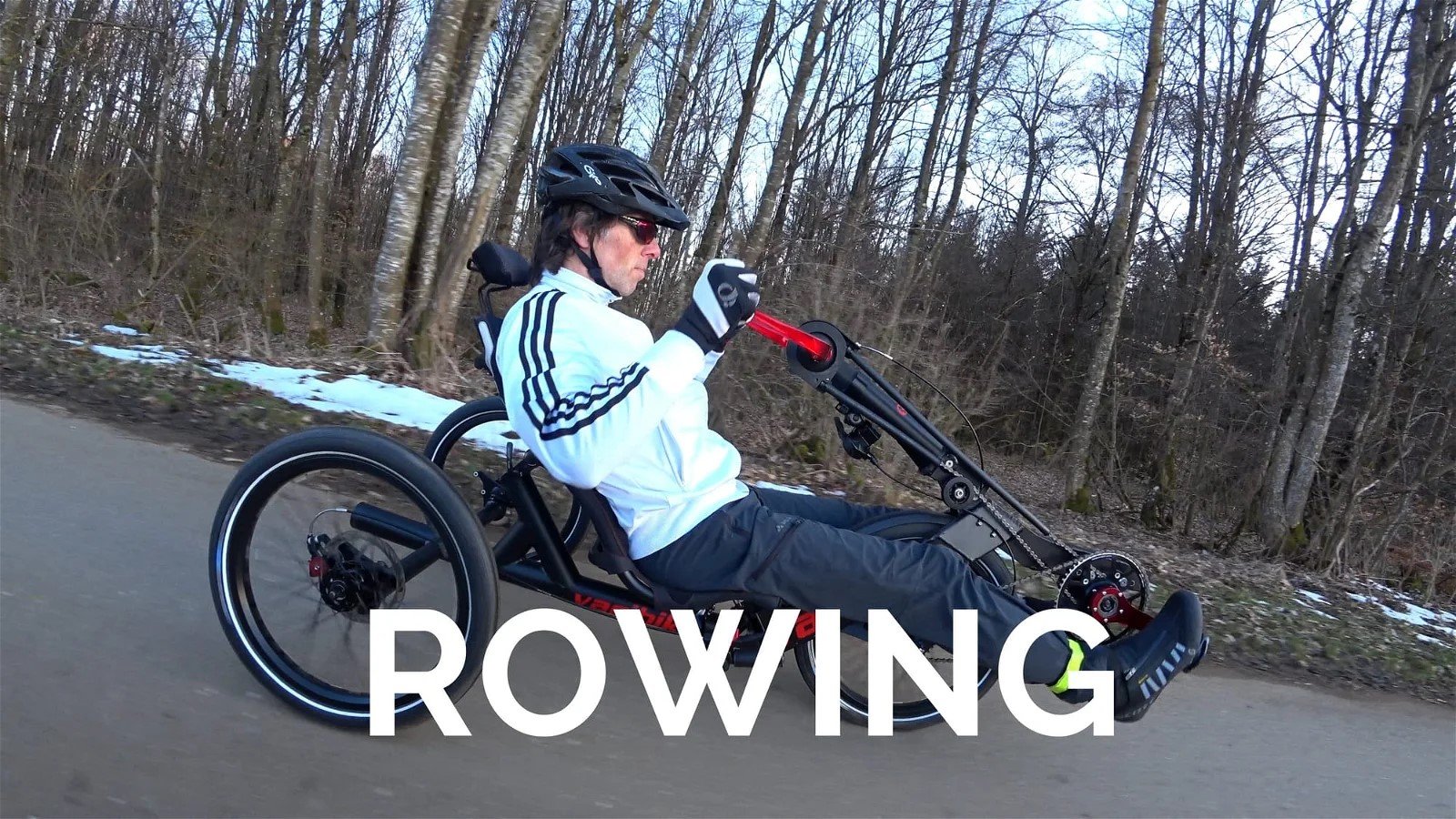Varibike extreme
Optional and MEGA
The Varibike Extreme System is the latest Varibike innovation and a patent pending. The Varibike Trike can optionally be equipped with the "Extreme System". The Varibike Extreme is extreme in the training effect - it is simply MEGA!
Degrees of freedom
The Varibike Extreme allows you to freely choose the type of drive for the legs. So whether you pedal with your legs synchronously or alternately, individually or together. So you can freely choose how you want to drive. You can row or paddle with your arms and / or legs. This turn your Varibike into a - Rowing bike - Paddle bike - Bike The cool thing is that you can freely switch between the different styles without switching!
See also the following video
Graphic: Possibilities and advantages of the "Extreme" system


Photo: Varibike Extreme
Rowing movement powerful all around
With a classic rowing bike, the rowing movement is a back and forth movement with stops when the movement is reversed. These stops when rowing have the disadvantage that they interrupt the drive movement and thus produce an uneven propulsion, this is typical for rowing, especially when driving uphill. Another disadvantage of classic rowing is that the full use of force only goes in the direction of pull. The return movement (push movement) when rowing is almost force-free. With the Varibike you can perform the entire drive movement with power. That is the huge advantage of the Varibike.

Foto: Varibike is a recumbent, rowingbike and handbike

Foto: Varibike is a recumbent, rowcycle and handcycle
Six pack machine
The normal Varibike Trike is a great full body workout. The Varibike Extreme is even more "extreme". The parallel leg pushing and pulling movement in combination with the arm movement is awesome. It is THE six pack machine. Our first customers confirm this. Try it! At our test facility you can extensively test the Varibike Extreme.
Also helps with injuries
Because the Varibike Extreme has independent leg cranks, you can use them optionally.
You can drive the Varibike Extreme as follows:
• both arms
• both legs
• one leg
• arms and one leg
• arms and legs together
With the Varibike Extreme you are completely free. For example, you have an injured leg. You can crank with the injured leg or not. If you don't crank with one leg, the leg crank simply stands still and the other leg can continue cranking at the same time. A huge advantage, especially when it comes to pain. One leg cranks and the other leg rests. Once the injured leg has rested, it can simply start cranking again.
